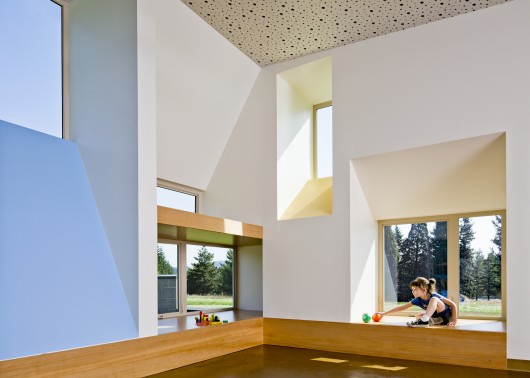
Architects: Mahlum
Location: 26000 Southeast Stark Street, Gresham, OR 97030, USA
Architect In Charge: Diane Shiner AIA LEED AP
Area: 22751.0 ft2
Year: 2011
Photographs: Lincoln Barbour

From MAHLUM ARCHITECTS. The Early Childhood Center replaces an existing facility at Mount Hood Community College. The college lacked funding for the project, but leveraged an existing relationship with Headstart and several private donors to finance the new childhood education center.

During vision sessions, the College was drawn to creating an environment that allows seamless transitions between indoor and outdoor learning and play. Concepts identified by Richard Louv in his book Last Child in the Woods, helped drive the design, which promotes strong connections to nature.
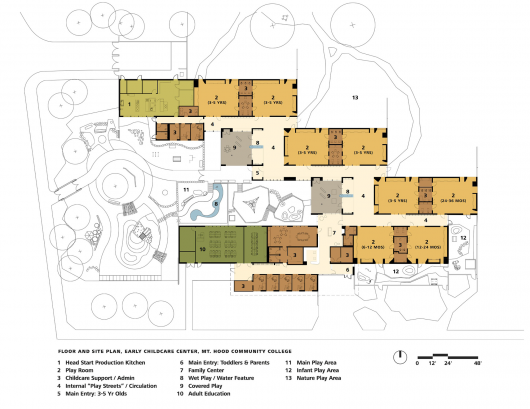
Set on a former parking lot but surrounded by mature fir trees, natural and man-made environments form an engaging network of playgrounds, eco systems, gardens, and interior play areas. Children enjoy ample opportunities for exploration, creativity, free-thinking and interaction; they can “get dirty” by playing in the sandbox with a water hand-pump or with floating ducks in the wet-play area.
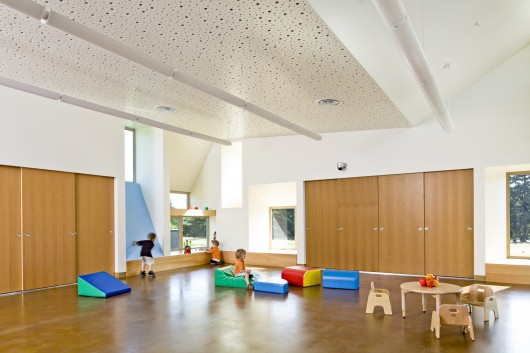
Conceived as a village of small play-learn communities, the center resembles a cluster of houses. Lower ceilings respond to the scale of the children. Clerestory windows suffuse play-learn spaces with daylight while maintaining a low volume. Internal and external transparency ensures supervision while connecting the children to their surroundings and each classroom to the greater community.
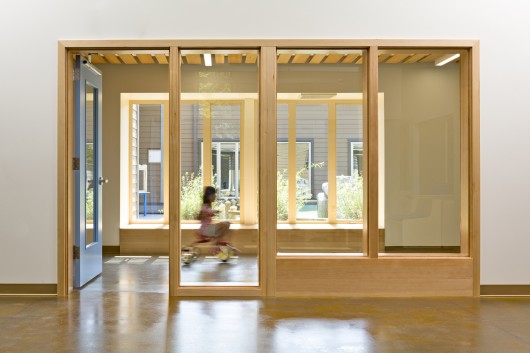
Drawing inspiration from patterns of daylight, weather and the seasons, play-learn spaces have varying degrees invite poetic reflection, joyful play, and relaxation. In the play spaces, deep walls offer window niches and benches that children can claim for themselves, and provide abundant, accessible storage in each room. Operable windows, daylighting, solar panels, a high efficiency envelope, and open storm water treatment reinforce connections to nature with a healthy, resource efficient facility.

With a tight budget, the College drew on local connections to achieve its goals for the center. Large amounts of unused lumber in the College’s basement was refinished by the College and installed as acoustic wood ceilings in the hallways. Wood built-in benches and cubbies were fabricated by local high school students and donated at material cost only. The wood textures and furnishings contribute to the warm, homey atmosphere of the center.
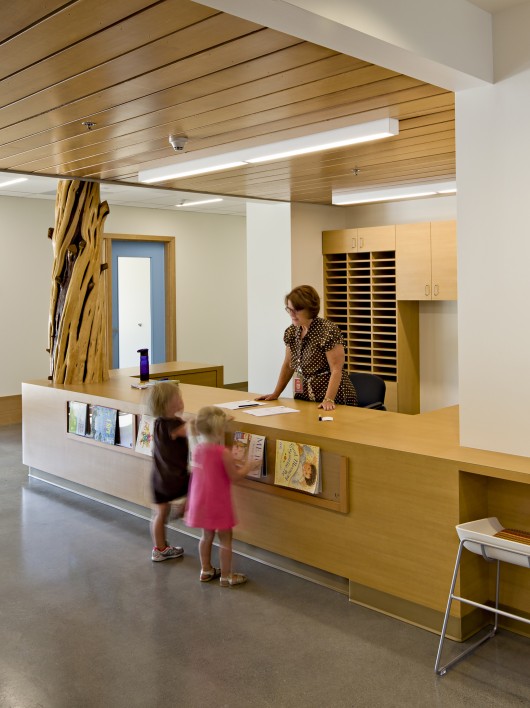
Operated by HeadStart, the project provides play-learn spaces for 24 toddlers and up to 140 three four and five year old kids. The center also includes childhood education classrooms for MHCC students and a production kitchen, which prepares and delivers meals to 8 local childcare facilities.

Project Manager : Kurt Haapala AIA LEED AP
Project Designer : Rene Berndt AIA LEED AP
Project Architect : Beth Brett AIA LEED AP
Interior Designer : Amy Noe
Project Team Member : Jason Manson AIA LEED AP
General Contractor: Walsh Construction
Landscape Architect: Greenworks PC
Civil/Structural Engineer: Harper Houf Peterson Righellis
Mechanical/Electrical Engineer: Interface Engineering
Acoustics: Altermatt Associates
Food Service: Halliday Associates
